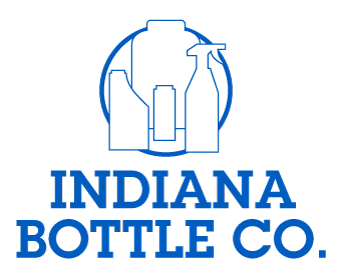The Big Picture Report on U.S. Manufacturing Business Conditions
Posted by IndustryNet on Monday, December 21, 2020
Following a tumultuous and unprecedented year, U.S. manufacturers are finishing out the year on a strong note. Although key indexes across multiple reports suggest activity in the sector is slightly slower than last month, expansion is still strong across the board as we head into the near year
Activity on the industrial marketplace IndustryNet continues to show increased search volume over last year for U.S. parts, products and services. IndustryNet helps buyers find suppliers in the industrial world and in October, activity on the platform was 123% higher in November 2019, compared to the same month in 2019, with searches for everything from domestic steel and chemicals to conveyors and printing trending up significantly (you can follow our weekly search insights here).
Today, we’re bringing you the big picture look at manufacturing business conditions, compiling key takeaways from various reports on output, labor, new orders, optimism and regional activity
Manufacturing Output Edges Up in November
U.S. Industrial production inched up 0.4% in November after posting a robust 1.1% increase in October, according to the latest report from the Federal Reserve, released December 15th. The Industrial Production and Capacity Utilization report, released monthly, is a composite index that includes manufacturing, mining and utilities.
Taken alone, manufacturing output increased 0.8% in November after posting a one percent increase in October. Meanwhile, utilities output fell 4.3%, while mining increased 2.3%.
Overall, the reading for industrial output in November is 5% below February’s pre-pandemic level, with the sector recouping more than half of the record losses seen between February and April, when industrial production tanked 16.5%.
Taking a closer look at the Fed’s manufacturing data, manufacturing output is performing slightly better than mining and utilities, with production now 3.8% below pre-pandemic levels. Durable goods manufacturing performed particularly well in November, with output in that category up 1.5%. Non-durable goods manufacturing, on the other hand, remained virtually unchanged, ticking up just 0.1%
Capacity utilization for manufacturing rose 0.6% to 72.6%. This is 12.5% higher than its lowest level recorded in April, but still falls short of its long run average by 5.6%.
Looking at the data by subsector, for a second straight month, manufacturing output gains were more evenly distributed across multiple industries (previously, the auto sector dominated swings in production). On the durable goods side, motor vehicles & parts; primary metals; aerospace & miscellaneous transportation equipment; and computer & electronic products all saw notable gains in output.
In non-durable goods, paper products and food processing saw an uptick in output.
Taking a year-over-year look, the non-durable goods sector saw output in good processing and paper products increase over last year. Durable goods did not fare quite as well, with just computer & electronic products posting an increase over last year. All other industries posted a year-over-year lost.
Unfilled Manufacturing Jobs Hit Record High
In the month of November, the U.S. economy as a whole added 245,000 jobs, after adding 638,000 jobs in October, and the unemployment rate remained unchanged at 6.7%. Manufacturing companies added 27,000 jobs, compared to November’s 38,000. The U.S. factory sector is still 599,000 jobs short of pre-pandemic levels.
Transportation equipment led gains in November, with that sector adding 17,800 jobs or roughly 66% of factory jobs gained in November. On the non-durable goods side, plastic and rubber and printing & related support activities edged up.
A separate report from the Labor Report finds that unfilled positions in the U.S. manufacturing sector has hit an all-time high. The Job Openings and Labor Turnover survey (JOLTS), released in November, found that job openings in the sector now stand at 525,000 or 4.1%. This includes 290,000 openings, or 3.7% in durable goods manufacturing and 230,000 open positions, or 4.9% in non-durable goods.
This stands as a record high for unfilled jobs in the manufacturing sector, with open positions crossing the 500,000 mark just once – in November 2018. Between the years 2000 and 2017, unfilled manufacturing positions averaged 273,000 by contrast.
Manufacturing Activity Hits Walks Back from October’s Two-Year High
Meanwhile, the Institute for Supply Management’s monthly report on business found manufacturing activity in the U.S. eased back slightly, after hitting a two-year high in October. Notably, the sector is well into expansion territory, with the index now at 57.5%.
Manufacturers saw new orders expand in November, though not as strongly as in October. The New Orders Index edged back 2.8% in November, to a still expansionary 65.1%. Anything over 50% indicates expansion in the sector.
The ISM’s Production Index followed much the same pattern, easing 2.2% to a reading of 60.8%. Fourteen of eighteen industries reported output growth, led by apparel, leather & allied products as well as textile mills and wood products.
Optimism trended up among executives, with the ISM reporting 2.5 positive comments for every one negative comment. One executive in the primary metals sector stated, “Our business is booming, as many customers need products ASAP. A great situation.”
Meanwhile, the ISM’s Employment Index, was a sore spot in November’s report, with that index headed back into contraction. The Employment Index now stands at 48.4%, down 4.8% from October.
Regional Surveys Show Manufacturing Expansion, but Growth is Slower
• Empire State Manufacturing Survey: New York factory activity edged up slightly in December, with the general business conditions index at 4.9. The survey reports 26% of executives responding to the survey indicated improving business conditions, while 21% reported worsening business conditions. Notably, the employment index rose to 14.2%, which is its highest point in a year. Optimism for future business conditions remained steady at 36.3.
• Texas Manufacturing Outlook Survey: Texas factory activity also expanded for a sixth straight month in November, but growth was far softer than in previous months. Notably, production fell significantly from 25.2 to 7.2 in November, while the new orders, capacity utilization and shipments indices all fell. Employment was a bright spot in November’s report, with the employment index edging up three points to 11.7%.
• Kansas City October Manufacturing Survey: Factory activity in the 10th district (encompassing Kansas, Colorado, Nebraska, Oklahoma, Wyoming, northern New Mexico and Western Missouri) also expanded in November, but activity levels are still below what they were one year ago. December’s survey included special questions about the impact COVID-19 has had on the region’s manufacturers. Notably, more than three quarters of respondents reporting the most recent surge of coronavirus cases has had a negative impact on their business. A large percentage (71%) reported an interest in purchasing production-enhancing equipment in the new year, while another 61% reported an interest in labor-saving technologies.
• Fifth District Survey of Manufacturing Activity (Richmond Fed): Manufacturing activity in the 5th District, which includes Maryland/D.C.; North Carolina, South Carolina, Virginia and most of West Virginia, expanded in November, though at a much slower pace than in October. The Richmond Fed’s activity index fell to 15 in November from 29 in October (anything over “0” indicates expansion). The survey suggested that although employment and wages continue to be on the upswing, many industrial companies are having trouble finding workers.
Industrial Solutions for Changing Times
At MNI, our mission is to help U.S. businesses thrive, providing tried-and-true prospecting and procurement solutions since 1912. Powered by trusted MNI data, IndustryNet is an industrial marketplace that connects industrial buyers with 400,000 U.S. manufacturers and suppliers of more than 10,000 types of products and services. Set up a free account, search for suppliers, send quote requests and more with this free industrial marketplace.
IndustryNet is also a direct path for U.S manufacturers to increase their visibility among domestic procurers. MNI also makes it easy for industrial companies to expand into new markets.
Click here to learn about how an IndustrySelect subscription can help you develop the right pool of leads for your product.





